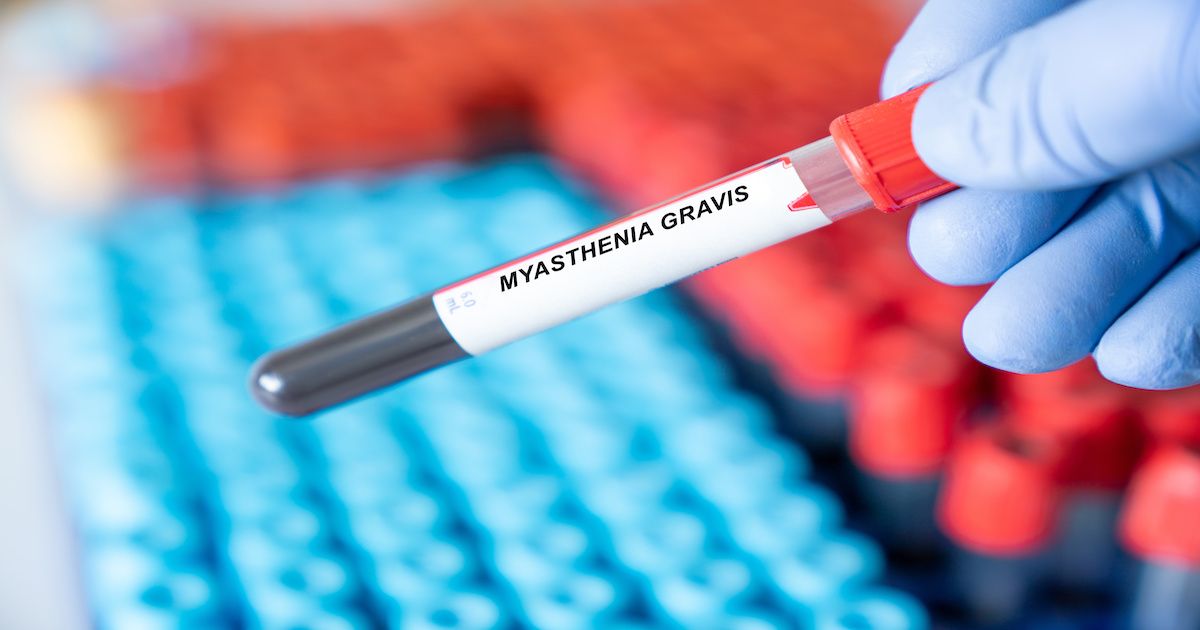News
Article
Older Age, Male Sex Identified as Potential Risk Factors for MG Following COVID-19 Vaccination
Author(s):
A new analysis has determined potential risk factors for developing myasthenia gravis following COVID-19 vaccination, with symptoms likely to appear within 2 weeks of receipt of a COVID-19 vaccine.
Male sex and being older than 50 years may be risk factors for development of myasthenia gravis following vaccination with a COVID-19 vaccine, according to a new analysis published recently in Medicine. However, full or partial improvement of the chronic neuromuscular junction disorder symptoms is expected within a month’s time.
“Questions and hesitancy concerning the safety and vaccine-induced autoimmune diseases have been raised. A growing number of cases developed inflammatory side effects, including neuromuscular junction disorders, shortly after COVID-19 vaccination worldwide,” authors wrote. “While myasthenia gravis is rare, a late diagnosis can result in a myasthenic crisis and even death.”
Myasthenia Gravis disease blood test in medical laboratory | Image Credit: luchschenF - stock.adobe.com

Citing small case reports of a potential connection between COVID-19 vaccination and myasthenia gravis development, they summarized findings from 3 case series and 8 case reports (N = 20 patients) they found by searching Medline, Embase, and Scopus; an initial search was conducted on November 12, 2022, and a follow-up on January 6, 2023, and all studies had to report incident case(s) of myasthenia gravis after COVID-19 vaccination, be observational in nature, and be written in English. The included studies came from the United Kingdom (n = 7); Italy (n = 4); the United States, South Korea, and Israel (n = 2 each); and Croatia and Japan (n = 1 each).
According to their date, the median (IQR) patient age was 64 (51-75) years, there were 9 patients older than 70 years, and 85% of the study cohort was male patients. Myasthenia gravis symptoms developed in 14 patients who received an mRNA-based vaccine (Pfizer-BioNTech or Spikevax) compared with 6 who got a vector-based vaccine (AstraZeneca).
Also seen among the patients with vector vaccine–associated myasthenia gravis, symptoms appeared in 5 patients after their first dose and in the sixth patient after a second dose. However, among the patients who received an mRNA-based vaccine, 5 patients each had symptoms appear after the first or second dose and 4 after their third dose.
In the 11 patients for whom presenting symptoms were recorded, the most common were binocular diplopia (n = 8), ptosis (n = 4), dysarthria and dysphagia (n = 2 each), and extremity asthenia (n = 1). Forty-five percent of patients reported more than 1 symptom. The median time between vaccination and symptom manifestation was 6 (2-7.5) days.
Ten patients also underwent rule-out imaging: 5 each had a brain CT and brain MRI, and 6 had a chest CT. Just 1 case of thymic hyperplasia was found. Abnormal decline in nerve function also was seen in 85% of patients who underwent repetitive nerve stimulation, and for the 4 patients who received single-fiber electromyography, all had abnormal results. Further, 2 patients had positive results on an intramuscular neostigmine test, and 2 patients saw symptom improvement following an iced-pack test, which the study authors said supported a myasthenia gravis diagnosis.
There were 9 cases of oculobulbar myasthenia gravis, and the rest were generalized myasthenia gravis. Fourteen of the 20 patients were positive for acetylcholine receptor (AChR) antibodies, 4 were muscle specific kinase antibody negative, and 4 wereAChR negative. Seven patients were treated with pyridostigmine, 5 with pyridostigmine plus corticosteroids, and 3 with intravenous immunoglobulin plus pyridostigmine and/or corticosteroids.
Nine patients had complete symptom clearance by the time of hospital discharge of within 1 month, 2 had myasthenic crisis, and 3 saw no symptom change by 3 months after discharge.
The study authors noted similar reports of new-onset myasthenia gravis or flare-ups among those already living with the disease following flu, hepatitis B, e-bacillus
calmette-guérin, and human papillomavirus vaccines. Between 1990 and 2017, 42 incident cases of postvaccination myasthenia gravis among adult patients were recorded by the FDA’s adverse event report system, they added, stemming from flu and hep B vaccines.
Exact mechanisms for why COVID-19 vaccines may induce myasthenia gravis and similar autoimmune neuropathies remain unknown, but the authors posit that 1 potential mechanism is molecular mimicry, or when the immune system’s response “cross-reacts with self-antigens if vaccine antigens mimic self-antigens, leading to an autoimmune reaction.”
“More extensive studies are necessary to draw definitive conclusions regarding the association or causality between COVID-19 vaccines and myasthenia gravis,” they concluded, “and to elucidate the specific mechanisms by which these vaccines may induce such autoimmune conditions.”
Reference
Tayebi AH, Samimisedeh P, Afshar EJ, et al. Clinical features and outcomes of myasthenia gravis associated with COVID-19 vaccines: a systematic review and pooled analysis. Medicine (Baltimore). 2023;102(40):e34890. doi:10.1097/MD.0000000000034890




